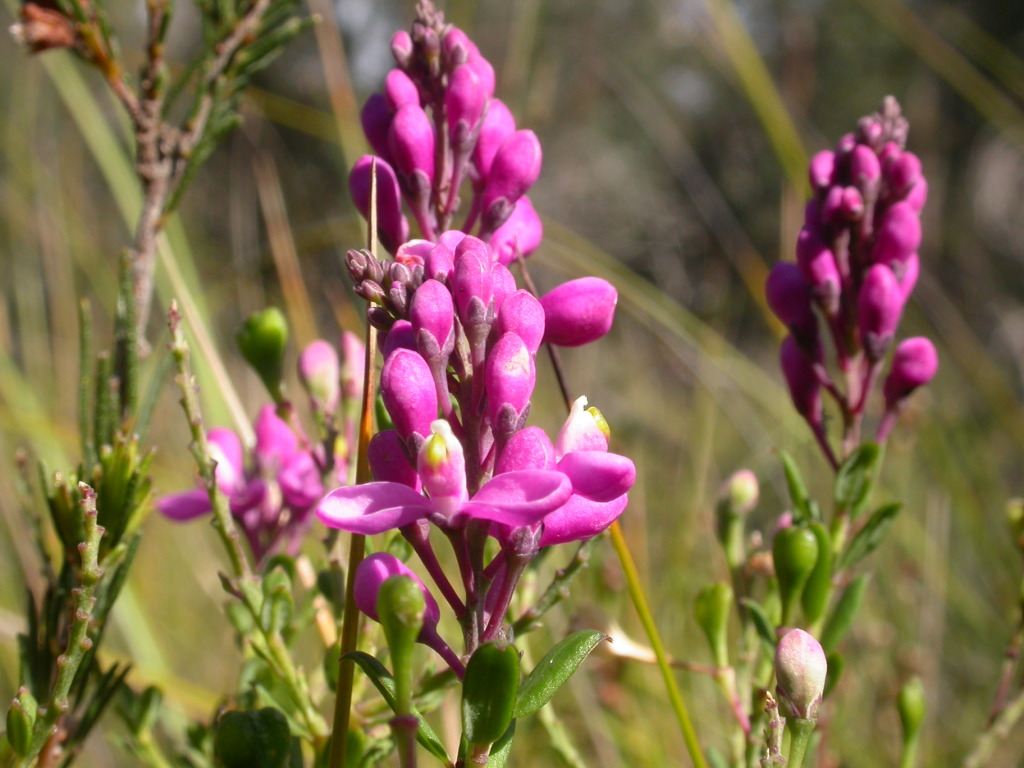Comesperma ericinum
DC. Heath MilkwortErect slender shrub 30–200 cm high; stems smooth and glabrous to minutely scabrous-pubescent. Leaves elliptic to oblong, 5–15 mm long, 1–4 mm wide, discolorous, glaucous beneath, margins recurved, midrib usually apparent, apex usually produced into a short, recurved point. Flowers pink to magenta, in terminal racemes; raceme axis 1.5–7 cm long; pedicels 3–6 mm long; sepals free, the outer 3 broad-ovate, 1–1.5 mm long, often purplish, wings obovate, 5.5–7.5 mm long, keel yellow-tipped, slightly shorter than wings, broadly hooded and 3-lobed at apex; upper petals c. oblong, subequal to keel, shortly united with it near base. Capsule spathulate, c. 7 mm long, truncate at apex; seeds ellipsoid, 2–3 mm long, dorsally glabrescent, ventrally with a pale, narrow longitudinal flange and silky hairs c. 5 mm long. Flowers Oct.–Dec.
MuM, VVP, VRiv, GipP, OtP, Gold, CVU, NIS, EGL, EGU, WPro, HSF, HNF, OtR, Strz, MonT, HFE, VAlp. Also Qld, NSW, Tas. Occurs mostly in damp heathland and heathy forest in the lowlands, extending into taller foothill forests (to c. 1000 m) in the eastern and north-eastern ranges. Occurs mostly in damp heathland and heathy forest in the lowlands, extending into taller foothill forest (to c. 1000 m) in the eastern and north-eastern ranges; uncommon west of Melbourne.
Plants of at least some populations emit a strong sarsaparilla-like scent from their roots when exposed.
Walsh, N.G. (1999). Polygalaceae. In: Walsh, N.G.; Entwisle, T.J., Flora of Victoria Vol. 4, Cornaceae to Asteraceae, pp. 130–137. Inkata Press, Melbourne.
 Spinning
Spinning
